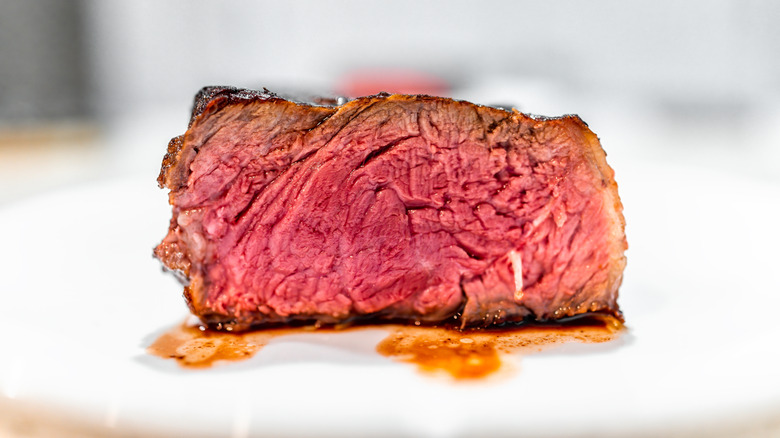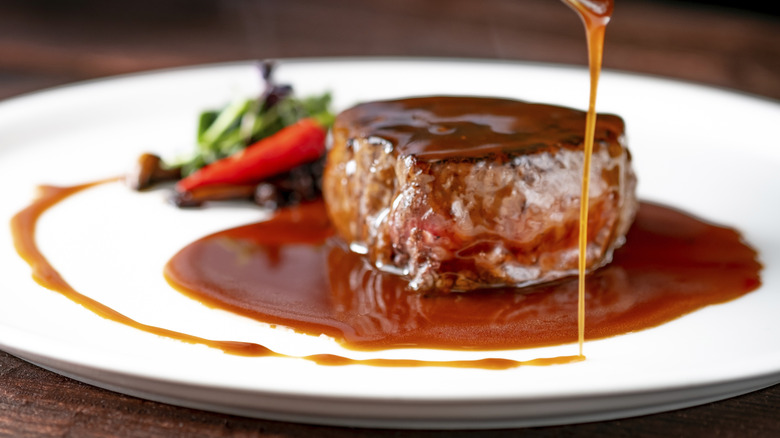The Best Seasoning For Blue Steak Is Simpler Than You Might Expect
In a Mashed poll, it turned out only 6% of people prefer their steak cooked rare. Naturally, an even smaller percentage will likely order "blue" steak, a style that's cooked even quicker and at a lower temperature. Blue steak gets its name from the blueish hue of the freshly-cut meat before being oxygenated. Contrary to some people's skepticism, it is safe to eat blue steak as long as the cooking tools are properly cleaned and the surface of the meat is thoroughly seared.
Mashed wanted to learn more about this rare (pun intended) steak style, so we talked to an expert. Sean Thompson is the executive chef at Porter House Bar and Grill, which made the Michelin Guide's list of the best steakhouses in NYC. According to Thompson, the biggest mistake people make with blue steak (besides not cooking it over high enough heat) is not seasoning the steak properly.
The expert chef's advice is surprisingly simple: "I recommend seasoning with sea salt and finishing with cracked pepper. Baste the steak in a pan with whole pats of butter," says Thompson. Basting in butter is a trusted cooking method for rich food, and never underestimate the power of salt and pepper to enhance flavor without overcomplicating a recipe. However, Thompson's ideal blue steak doesn't end here; the chef is a fan of sauces and recommends demi-glace.
Demi-glace is a steak classic
Demi-glace is made with a reduction of beef stock and espagnole, one of the five mother sauces; espagnole contains dark roux, mirepoix, and also (more) beef stock. "Demi-glace is always my go-to for sauces. It simply enhances the beef without overshadowing the flavor profile," Sean Thompson explains. A classic French sauce makes for an elegant blue steak.
Demi-glace is neither a gravy nor a stock but is often compared to the two for its depth of flavor. It's perfect for all steaks from blue to well-done. Making demi-glace completely from scratch requires many components like beef bones, mirepoix vegetables, red wine, and roux ingredients. However, longer than the ingredient list are the hours of simmering and straining it takes for demi-glace to come together. Even Ina Garten struggles to make this dish because of how tedious it is. If you're ever served a demi-glace at a steakhouse, appreciate the effort that goes into it.
As for what to pair with your blue steak, Thompson recommends potatoes, adding, "It's a classic combo for a reason!" Whether roasted, scalloped, or mashed, potatoes will also benefit from a demi-glace flavor.

